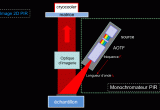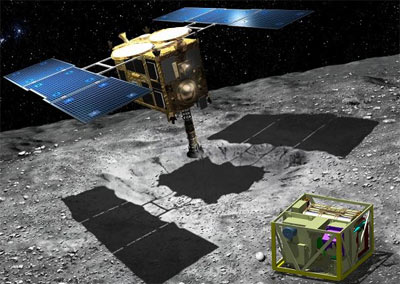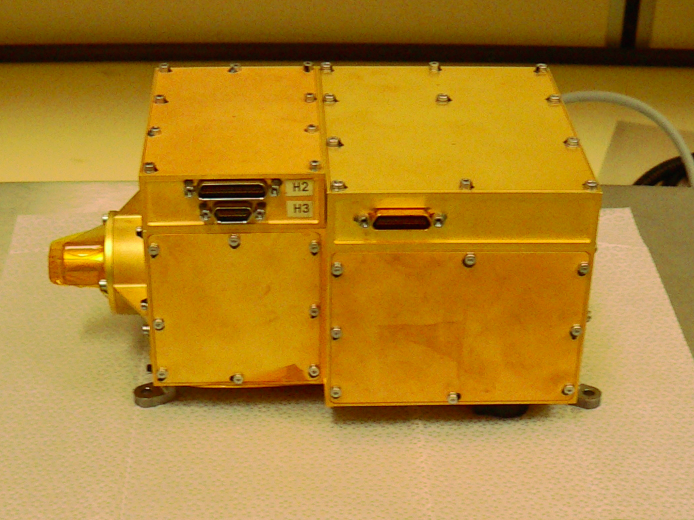Hayabusa Micromega

The objective of the Japanese mission Hayabusa-2 was to study and return a sample of a Class C asteroid, "Ryugu". These asteroids are the parent bodies of carbonaceous chondrites, primitive meteorites containing a large fraction of organic matter (up to a few percent). Their study allows us to better understand the planetary formation processes and more generally to have access to the first millions of years of the Solar System, or even before with the possible presence of pre-solar grains. Their composition, rich in organic matter, is also particularly interesting to study in order to better constrain the scenarios of formation and evolution of organic matter in the Solar System.
After studying the asteroid "Ryugu" from orbit, the Hayabusa-2 probe released a small lander that completed the measurements obtained from orbit as well as select the sample collection site. The probe landed twice on the asteroid's surface and collected several gr of Ryugu materials that was succesfully sent back to Earth.

Figure 1: Artist's image showing the Hayabuza-2 satellite and its MASCOT lander with MicrOmega on board
The lander, Mascot, with a very small mass and volume (10 kg for a volume of approximately 30x30x20 cm3) was developed under the direction of the DLR (Deutschen Zentrums für Luft- und Raumfahrt) in cooperation with CNES. Its payload, reduced to around 2.5 kg, includes the MicrOmega instrument, a near-IR hyperspectral microscope developed by the IAS.
The Hayabusa-2 mission was successfully launched in December 2014 and has reached its target at the end of 2018. The sample return to Earth was successfully completed on December 2020. The samples are currently analyzed in the Japanese curation facilities, which includes a Micromega laboratory version (see project Micromega Curation Facilities).

Figure 2: Flight model of the MicrOmega / Hayabusa-2 instrument
The "MicrOmega-Curation Facility" was successfully delivered to ISAS in July 2020.
Contacts : Jean-Pierre Bibring, Cédric Pilorget



